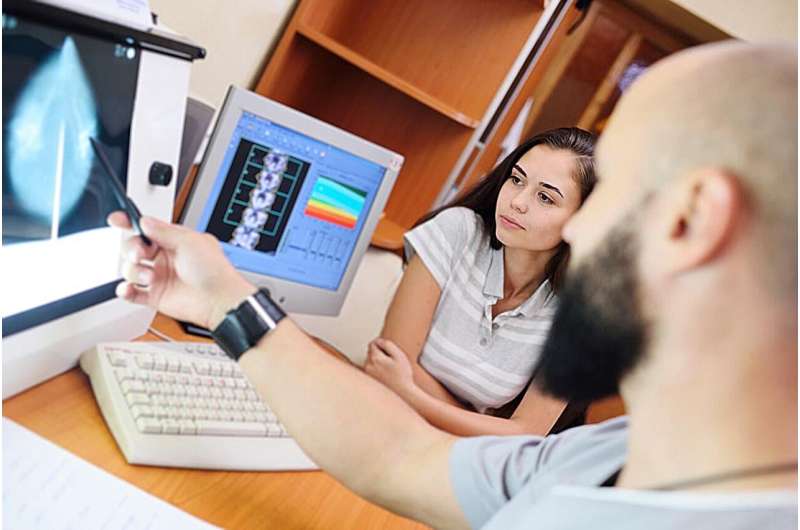This article has been reviewed according to Science X's editorial process and policies. Editors have highlighted the following attributes while ensuring the content's credibility:
fact-checked
reputable news agency
proofread
Everything you need to know about breast density, from the experts

As a new federal regulation that requires mammography centers to tell their patients how dense their breasts are takes effect, experts explain what breast density is and why it is important.
The American College of Surgeons' National Accreditation Program for Breast Centers (NAPBC) standards, revised last year to focus on personalized care, also require mammography centers to educate patients on breast density. Here, radiologists on the NAPBC board offer insight into what women should know about breast density, and why it matters.
- Breast density is the ratio of fatty and fibrous tissue in the breast. Breast density, which is unique to each woman, is important for several reasons. First, having dense breast tissue may mask small masses on a mammogram. Fatty tissue tends to appear as dark areas, while dense breast tissue and cancerous changes often show up as white areas, making it harder for radiologists to distinguish between suspicious lesions or benign changes.
"Another way to think about breast density on a mammogram is like looking at a cloudy sky and trying to differentiate things that are coming through in the sky. You're not going to see things as well when the sky is cloudy versus when it's clear," explained Dr. Georgia Spear, division chief of breast imaging at Endeavor Health/NorthShore University HealthSystem and an NAPBC board member representing the American College of Radiology Imaging Network.
In addition to making it hard to detect cancerous changes during mammograms, breast density raises a woman's risk of developing breast cancer by four to six-fold. Spear noted breast cancer tends to develop in fibrous and glandular tissue, which is more abundant in women with dense breasts.
- Only imaging can measure breast density. According to the National Cancer Institute (NCI), four categories of breast density may be noted on a woman's imaging report: (1) entirely fatty breast tissue, (2) scattered fibroglandular breast tissue, (3) heterogeneously dense breast tissue, and (4) extremely dense breast tissue.
- Women with dense breasts may benefit from additional screening. Women with increased breast density may receive supplemental screening with ultrasound or breast MRI. These screening techniques can help radiologists spot cancerous changes that may be masked by dense breast tissue.
"Density is just one factor that we look at when we decide what's the best way to screen a patient," said Dr. Lora Barke, chief of breast imaging at Invision Sally Jobe in Denver and an NAPBC board member representing the American College of Radiology on Breast Imaging Commission. "When we look at density, it helps us decide on some other tools that would be beneficial for that patient along with mammography. Knowing breast density provides patients with a bigger picture to make more informed decisions."
While mammograms remain the gold standard of breast cancer screening, Barke noted that MRI and/or ultrasound may be superior in detecting small masses or other subtle changes that may be more difficult to see on a mammogram, especially in women with dense breast tissue.
Unfortunately, insurance coverage for supplemental screening varies widely, so breast MRIs and ultrasound may not be fully covered for some women.
- A woman's breast density level may change over time.
Women should not panic if they are told they have dense breasts, as it is extremely common. Nearly half of women over the age of 40 have dense breast tissue, according to the NCI. While breast density can remain constant, the tissue can also become less dense after childbirth and as women age.
"We record the category of breast density every single time a patient visits us, so it's something that we monitor from year to year on a mammogram," said Dr. Jocelyn Rapelyea, associate director of breast imaging at GW Medical Faculty Associates in Washington, D.C. "If you are informed that you have dense breast tissue on your mammogram report, my advice is to discuss that finding with the radiologist as to what it means for you and what additional screening may be right for you."
More information: The National Cancer Institute has more about dense breasts.
Copyright © 2024 HealthDay. All rights reserved.


















